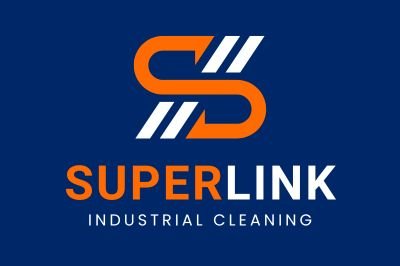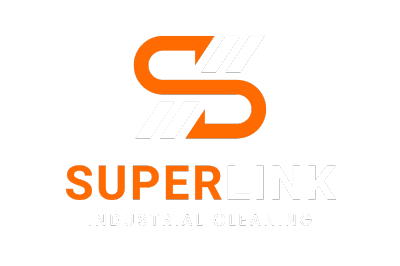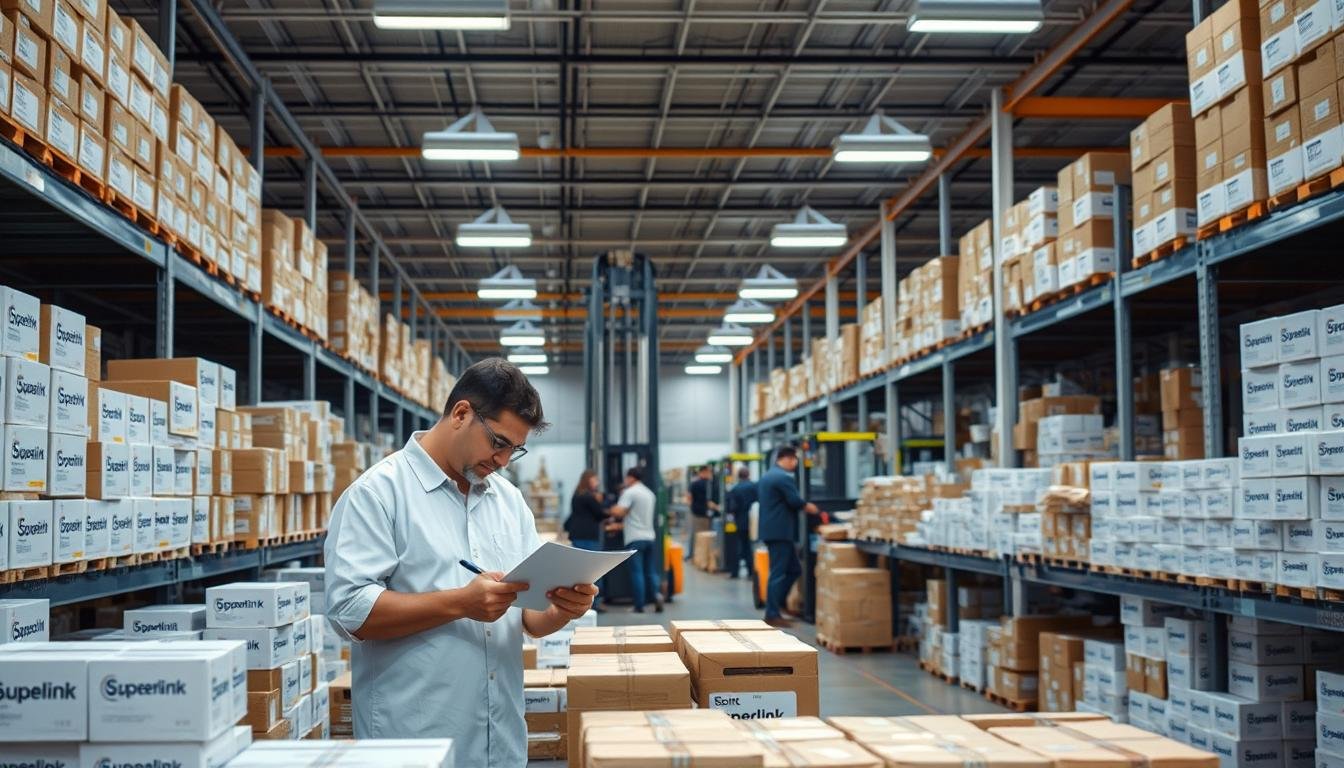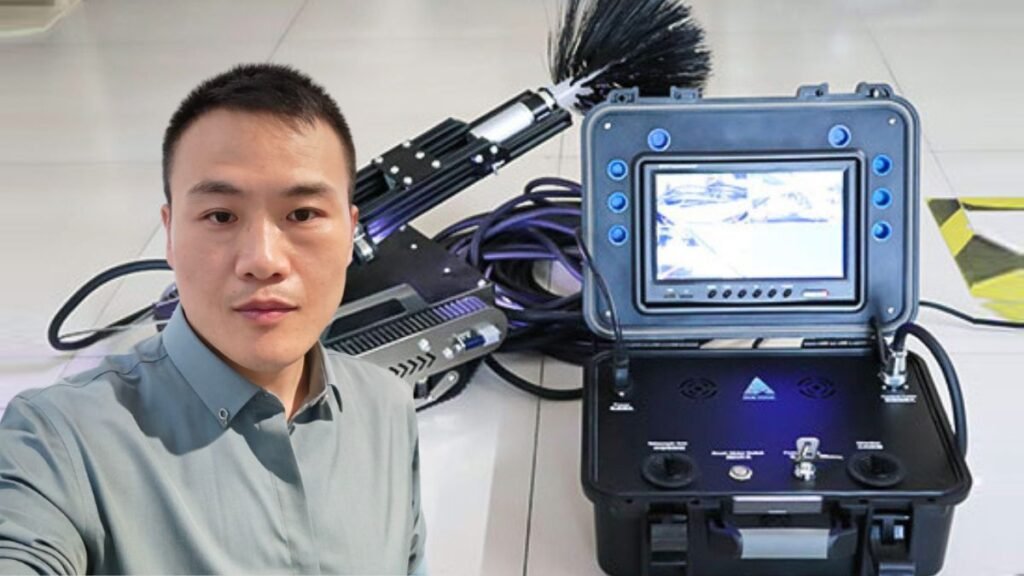Ever wondered how designs are etched on metal or how precise cuts are made in factories? Welcome to the world of industrial lasers! This guide will explore laser marking, welding, and cutting. It shows how these technologies are changing industries and opening new opportunities for hobbyists and entrepreneurs.
Laser technologies are changing manufacturing and craftsmanship. They’re used for personalizing granite memorials and joining metal in aerospace. If you’re interested in starting a laser engraving business or just want to learn how these machines work, you’re in the right place!
Laser marking, welding, and cutting are no longer just for big industries. Even home hobbyists can use compact CO2 laser machines. Let’s explore how these tools are shaping our world, one laser pulse at a time!
Key Takeaways
- Laser technologies are versatile, used in industries from aerospace to personalized crafts
- Fiber lasers offer high power for industrial use, while CO2 lasers are popular for hobbyists
- Laser welding provides precision joining with power densities up to 10^7 watts per square centimeter
- Machine specifications like power output and speed are key for optimal performance
- Safety and regular maintenance are essential for the long life and efficient use of laser equipment
Introduction to Laser Technologies
Laser technologies have changed many industries. They bring precision and versatility to manufacturing. From Laser Engraving to Laser Cutting Machines, these tools are key in many fields.
Importance of Laser Marking, Welding, and Cutting
Laser marking is a big deal for product ID and traceability. It’s the fastest way to mark parts, with high readability rates. It’s great for detailed graphics and small shapes.
Laser welding and cutting have also changed manufacturing. They offer high accuracy and efficiency. Laser Cutting Machines are essential in making precise cuts on different materials.
Evolution and Applications of Laser Technology
Laser technology has seen a lot of progress. Now, we have many laser types for marking, like fiber and CO2 lasers. Each type is best for different materials, like metals or organic materials.
Laser tech is used in many areas. In cars, it helps track parts like drivetrains and EV batteries. It’s also used in electronics, medical devices, and jewelry for precision and durability.

Laser Engraving and marking have improved a lot. Now, we can etch, anneal, foam, and carbonize materials. These methods add unique looks and marks to many materials. The marks last well, even against acids, abrasion, and heat.
As we dive into laser tech more, we’ll see how it’s changing manufacturing and design.
What is Laser Marking?
Laser marking is a cool process that uses lasers to make permanent marks on different materials. It’s like giving objects their own unique signature! This method can etch barcodes, serial numbers, and detailed designs onto surfaces.
Definition and Key Features
Laser marking uses a focused light beam to change a material’s surface. It works on a wide range of materials, from metals like steel and titanium to softer ones like wood and paper. The magic happens through different methods:
- Engraving: Carving deep into the material
- Ablation: Removing layers of the surface
- Blackening: Changing the color of the material
- Skimming: Creating a slight surface alteration

Common Applications in Various Industries
Laser marking is a big deal in many fields! It’s a superstar in automotive, medical, and consumer goods industries. For example, it makes high-contrast identification marks on plastics, glass, and leather for product traceability.
Advantages of Laser Marking
The perks of laser marking are pretty awesome:
- Permanence: Marks that last as long as the product itself
- Precision: Incredibly detailed and accurate markings
- Versatility: Works on a wide range of materials
- Efficiency: High-speed processing with minimal waste
- Safety: Class I laser workstations make it a safe process
Laser marking is a game-changer for many industries. It boosts operational efficiency, ensures regulatory compliance, and helps fight counterfeit products. Plus, it’s eco-friendly with no consumables needed and less maintenance required.
From tiny electronics to massive machinery, laser marking leaves its mark on our world. It’s not just about labeling – it’s about improving product quality, traceability, and brand protection. Now that’s what I call smart technology!
Understanding Laser Welding
Are you ready to explore laser welding? This advanced technology is changing many industries. Let’s see how Laser Welding Systems are making a big impact.
Overview of Laser Welding Processes
Laser welding is like something from a sci-fi movie. It uses light beams to join materials with great precision. This method works at very high power, making strong welds in thick materials.
This process creates a unique keyhole effect. It greatly affects the quality and depth of welds compared to old methods7.
Types of Laser Welding Techniques
There are two main types of laser welding:
- Deep Penetration Welding: Used in cars, planes, and heavy machines for strong connections.
- Conduction Welding: Works at lower power, good for thin metal and materials like aluminum and copper.
Fiber Lasers have made a big difference. They are more efficient and smaller than old lasers. These systems can work non-stop, with little upkeep, which is great for fast production.
Benefits of Laser Welding Over Traditional Methods
Laser welding has many benefits:
- Precision: The beam can be very small, allowing for precise welding of tiny parts.
- Speed: High-power lasers can work very fast, meeting tight deadlines.
- Quality: The fast cooling and less contamination mean better welds.
- Minimal Distortion: The area affected by heat is much smaller than with old welding.
While laser welding costs a lot at first, its efficiency and precision are worth it. It’s changing industries like electronics, batteries, cars, and planes. As this tech gets better, we’ll see even more amazing uses in the future!
Insights into Laser Cutting
Laser cutting is changing the game in manufacturing. It uses light beams to cut through materials, making precise designs and clean cuts. Let’s explore what makes it so special!
What Makes Laser Cutting Unique?
Laser cutting machines are true marvels. They use powerful lasers for accurate cuts. The laser cutting process can make cuts as thin as 0.004 inches, depending on the material. This precision lets us create designs that old methods can’t match.
CO2 lasers, a favorite for laser cutting, work at 10.6 micrometers. They can be powered in different ways, with RF-excited methods being more popular for their durability.
Industry Applications of Laser Cutting
Laser cutting machines are used in many industries because of their flexibility. They can work with metals, plastics, wood, and leather. In metal work, fiber lasers are preferred for cutting shiny metals because of their small spot size.
- Automotive: Precise cutting of body panels and interior components
- Aerospace: Crafting lightweight yet strong parts
- Electronics: Creating detailed circuit boards
- Fashion: Cutting and engraving fabrics and leather
The Advantages of Choosing Laser Cutting
Laser cutting has many benefits over traditional methods:
- Precision: Laser beams can focus to a diameter under 0.0125 inches, ensuring accurate cuts.
- Speed: For example, piercing a 0.5-inch thick stainless steel sheet takes only 5-15 seconds.
- Versatility: CO2 lasers are great for plastics, while fiber lasers work best for metals like copper and aluminum.
- Automation: Laser cutting fits well with automated processes, making production more efficient.
With these benefits, it’s clear why laser cutting is key in modern manufacturing. It’s perfect for working with metals, plastics, or other materials, improving your production.
Comparing Traditional Methods vs. Laser Technologies
Laser technologies have changed the game in industry, beating traditional methods in many ways. They offer better efficiency, lower costs, and are easier to use. Let’s see how they compare.
Efficiency and Precision in Laser Applications
Laser technologies are way ahead in precision and speed. For example, laser welding makes deeper, stronger welds with less damage around them. This is perfect for making detailed welds on thin materials, which is key in car, plane, and electronics making.
Cost-Effectiveness of Laser Technologies
Lasers might cost more at first, but they save money in the long run. They use less material and weld faster, making them cheaper than old methods. Companies can be 40% more productive with laser welding in some cases.
User-Friendliness Compared to Conventional Options
| Feature | Traditional Methods | Laser Technologies |
|---|---|---|
| Precision | Lower | Higher |
| Speed | Slower | Faster |
| Material Compatibility | Limited | Wide range |
| Learning Curve | Steeper | Shorter |
| Initial Cost | Lower | Higher |
In summary, while old methods are useful in some areas, lasers are changing the game. They bring efficiency, flexibility, and are easy to use. As tech keeps improving, lasers will become even more important in making things.
Key Industries Utilizing Laser Marking, Welding, and Cutting
Laser technology has changed how we make things in many fields. Let’s see how different areas use lasers to make things better and more efficient.
Aerospace Industry
The aerospace world needs lasers for their exactness and speed. Laser cutting makes parts with accuracy down to ±0.1 mm, which is key for aircraft safety. Companies in aerospace use FANUC CNCs for 5-axis machining. This makes laser work more effective and profitable.
Automotive Sector
The car industry uses lasers a lot, with over 80 million cars made worldwide in 2022. Lasers help mark parts and track them. Laser cutting in car making can cut material waste by up to 25%. FANUC robots in Laser Welding Systems bring unmatched flexibility with 6 axes of freedom, achieving high precision at different angles.
Electronics Manufacturing
In electronics, laser cutting is key for making tiny parts. The accuracy of laser cutting in electronics is vital, with tolerances as small as ±0.05 mm for things like PCBs. Using lasers with FANUC automation improves assembly and material handling, making electronics making more efficient and green.
These fields show how versatile and precise lasers are. From making detailed aerospace parts to boosting car making and changing electronics making, lasers are key in today’s making processes.
Factors to Consider When Choosing Laser Technology
Choosing the right laser technology can seem overwhelming. But don’t worry, I’m here to help! We’ll explore the important factors to consider when looking for Laser Cutting Machines or Fiber Lasers.
Machine Specifications and Features
When examining laser machines, focus on power, precision, and speed. These machines can create spots as small as 0.2 mm to as large as 2 mm, ensuring precise work with little heat damage. Higher power means faster marking and deeper cuts, but be cautious not to damage materials.
Material Compatibility
Laser technology works well with many metals and alloys, making it versatile across various industries. Yet, each material requires a specific approach. For instance, marking stainless steel requires focusing the laser on the surface for optimal results. For blackening metal, MOPA fiber lasers are ideal due to their adjustable pulse width and frequency.
Cost Considerations
Cost is a significant factor. Fortunately, there are options for every budget. Compact welding machines like DaDo are efficient and affordable, ideal for small workshops. For marking machines, you can choose from entry-level models like Fiberlux Nano to more advanced options like Fiberlux 3D or Fiberlux EL.
Keep in mind, the initial cost is just part of the equation. Training time is also important, as most laser marking machines require practice to master. But with the right machine and patience, you’ll soon be marking like a pro.
Maintenance and Safety in Laser Operations
Laser technologies have changed many industries. But, they need careful handling and upkeep. Let’s look at how to keep your Industrial Lasers and Laser Cutting Machines in great shape. Also, how to make sure your work area is safe.
Regular Maintenance Tips for Keeping Equipment in Top Shape
Keeping your laser gear in good condition is key for its performance and life span. Regular care of Industrial Lasers and Laser Cutting Machines helps avoid downtime. It also boosts productivity.
- Clean optics and mirrors regularly
- Check and replace filters as needed
- Lubricate moving parts according to manufacturer’s guidelines
- Inspect and tighten electrical connections
- Calibrate the laser beam for accuracy
Safety Protocols for Operators and Workspaces
When working with Industrial Lasers and Laser Cutting Machines, safety is the top priority. Class 4 lasers, used for welding, marking, and cutting, can be very dangerous to eyes and skin.
To keep your workspace safe:
- Use Class 1 laser enclosures for Class 4 lasers to create a safe operational setup
- Install proper ventilation systems to prevent exposure to Laser Generated Air Contaminants (LGACs)
- Keep fire extinguishers nearby and maintain a clutter-free workspace
- Provide thorough training for all operators on laser safety and proper procedures
Remember, safety glasses with the right Optical Density (OD) are vital when working with open laser systems. A higher OD number offers better protection for specific laser wavelengths.
By sticking to these maintenance and safety tips, you’ll make sure your Industrial Lasers and Laser Cutting Machines last longer. You’ll also keep your team safe from possible dangers.
| Laser Class | Hazard Level | Safety Measures |
|---|---|---|
| Class 1 | No hazard during normal use | Standard precautions |
| Class 4 | Very hazardous to eyes and skin | Enclosures, PPE, training |
Future Trends in Laser Technology
Laser technology is changing fast, bringing new things to Precision Laser Processing. It’s going to change many industries and open up new possibilities.
Innovations on the Horizon
Laser systems are getting smarter and more efficient. They’re going to be a thousand times faster, making things much quicker. They also need less setup, making things easier.
Expanding Applications Across New Industries
Laser tech is being used in new places. It could change how we raise chickens, making gender detection easier. It’s also making car headlights brighter, lighting up to 600 meters.
Lasers are making home appliances smarter. Dishwashers and washing machines can now figure out what to do with your clothes. Even ovens are getting better, adjusting cooking based on what you’re making.
Laser cutting is getting very precise, with errors under 0.1 mm. This makes it great for detailed work in many fields. With better software, cutting will get even faster.
Even though lasers are expensive, they save time and money in the long run. As more people use them, we’ll see new uses in medicine, security, and 3D modeling.
Buying Considerations for Laser Machines
Are you ready to explore laser machines? We’ll look at key things to think about when buying one. This includes budgeting and comparing different models. We aim to help you make a smart choice.
Budgeting for Initial Investment and Operating Costs
When planning your budget for Laser Cutting Machines, think about both the initial cost and ongoing expenses. Fiber laser cutters are great for metal work because they’re precise and efficient. They can cut faster than CO2 lasers, with parts lasting up to 100,000 hours.
CO2 lasers are better for cutting materials like wood and acrylic. They can cut through 1mm thick steel at 30 meters per minute with a 2000W laser. But, they cost more to build and maintain.
| Laser Type | Ideal Materials | Speed | Maintenance |
|---|---|---|---|
| Fiber | Metals (steel, aluminum) | Up to 2x CO2 speed | Low |
| CO2 | Non-metals (wood, acrylic) | 30m/min for 1mm steel | High |
| YAG | Thin materials (<8mm) | Varies | Low (few dollars/hour) |
Comparing Brands and Models
When looking at Laser Engraving machines, think about power and cutting accuracy. Power can range from 1000W to 3000W, with higher power meaning higher costs. Most machines claim to cut within 0.5mm, but actual accuracy is usually between 0.4-0.6mm.
Evaluating Customer Support and Service
After-sales service is very important. The market needs clear support promises because parts can fail over time. When picking a laser machine, ask about warranties, training, and customer support availability.
By considering these points, you’ll be ready to find the right laser machine for you. Happy shopping!
The Role of Software in Laser Technologies
Software is key in laser technologies, serving as the brain. It combines precision and creativity, allowing users to design and execute complex tasks. This includes laser marking and precision laser processing.
Software for Laser Marking and Cutting
The laser technology market has many software options. LightBurn is versatile, supporting various operating systems and graphic formats. It’s great for both newbies and experts. CorelDRAW, on the other hand, offers advanced tools for laser engraving.
For hobbyists and small businesses, RDWorks is a free option. AutoCAD is perfect for industries needing high precision, like engineering and architecture. Many laser machines come with their own software, making setup easy.
Designing and Programming for Optimal Results
Good software is key for laser marking and cutting. It must accurately set machine and laser power settings. Custom settings for power, speed, and material are vital for the best results.
Being able to edit nodes is important for complex designs. The CMS Process Engine shows this by making design and programming easier across all systems.
| Software Feature | Importance | Example |
|---|---|---|
| Multi-format Support | High | 8-12 file formats on average |
| Customization | Critical | Power, speed, material settings |
| Integration | Essential | Hardware-software compatibility |
| User Interface | Important | Intuitive design tools |
The laser engraving market is growing fast, expected to hit $7.5 billion by 2026. This growth highlights the need for advanced, easy-to-use software. It’s essential for unlocking the full power of laser marking and precision laser processing.
Troubleshooting Common Issues with Laser Equipment
Hey hey, fellow laser enthusiasts! Let’s explore troubleshooting for industrial lasers and laser cutting machines. It’s not always easy, but I’m here to guide you through it!
Identifying Performance Problems
In my laser tech journey, I’ve seen it all. From unclear markings to power issues, there are 9 common problems with laser marking machines. Laser source aging can make your markings less clear over time. And optical components that aren’t aligned or are dirty will show in your work.
CO2 and fiber laser cutter users, I feel your pain. Issues can pop up, no matter your skill level. Uneven cleaning often comes from misaligned lenses and light paths. And those wavy cut lines? They might mean your reflectors or focusing lenses are loose.
Solutions and Best Practices for Operators
Now, let’s talk solutions! First, check your focus. If your markings aren’t clear, adjusting the focal position can help a lot. For engraving depth issues, check your laser power and focus size. And here’s a pro tip: stop your laser operations for 30 minutes every 3 hours to prevent overheating.
Regular maintenance is essential, folks! Clean those ventilation fans every 6 months and keep your machine serviced. For you rubber plate industry folks, watch out for impurities in offset plates – they can cause sparks. And don’t forget to check your solder joints regularly – virtual connections can lead to big failures. Remember, keeping your industrial lasers and laser cutting machines in top shape is easy with these tips. Happy lasering!
FAQ
What are the main types of industrial lasers used for marking, welding, and cutting?
Hey there! Industrial lasers include fiber lasers, CO2 lasers, and solid-state lasers. Fiber lasers are versatile for marking and cutting metals. CO2 lasers are great for cutting non-metals like wood and acrylic. Solid-state lasers are all-rounders for various tasks.
Each type has unique abilities. Choosing the right one depends on your specific needs!
How does laser marking differ from traditional engraving methods?
Great question! Laser marking is a high-tech method compared to traditional engraving. It’s non-contact, making it precise and safe for delicate surfaces. It’s also faster and can create complex designs.
Traditional engraving is useful but can’t match laser marking’s speed and precision. It’s like comparing a smartphone to a rotary phone – both make calls, but one’s way more advanced!
What materials can be processed using laser cutting machines?
Oh boy, the list is longer than my shopping list! Laser cutting machines can cut through metals and non-metals, and even fabrics and leather. The right laser type is key for each material.
For example, CO2 lasers are great for non-metals, while fiber lasers excel at cutting metals. It’s all about finding the perfect match!
How does laser welding compare to traditional welding methods in terms of efficiency and quality?
Laser welding is like the superhero of welding! It’s faster, more precise, and creates stronger joints with less heat distortion. Imagine welding with the precision of a surgeon – that’s laser welding for you!
It’s perfect for thin materials and complex shapes. Plus, it’s more energy-efficient and can weld tricky materials. While it might not replace traditional welding, it’s changing the game in many industries!
What are the safety considerations when operating laser equipment?
Safety first, always! Laser equipment is powerful, so eye and skin protection is key. Always wear proper safety goggles designed for your laser type – it’s not just cool, it’s critical!
Ensure your workspace is enclosed and ventilated to handle fumes. Proper training is also essential – these aren’t toys, after all. Remember, a safe laser operator is a happy laser operator!
How do I choose the right laser technology for my specific application?
Choosing the right laser tech is like finding the perfect dance partner – it’s all about the right match! Consider the materials you’ll work with most often and the type of work you’ll do.
Don’t forget to factor in your budget, both for the initial purchase and ongoing costs. Chat with suppliers and try demos if possible. Remember, the cheapest option isn’t always the best in the long run. Take your time, do your homework, and you’ll find your perfect laser match!
What are the maintenance requirements for laser cutting machines?
Keeping your laser cutting machine happy is easier than you might think! Regular cleaning is key – dust and debris are like kryptonite to lasers. Check and clean optics (like mirrors and lenses) regularly.
Keep an eye on coolant levels and filters, and replace them as needed. It’s also important to lubricate moving parts and check for any loose connections. Think of it like taking care of a car – regular check-ups prevent bigger problems down the road. And always follow the manufacturer’s maintenance schedule. A little TLC goes a long way in keeping your laser cutting machine in top shape!
What software is typically used for laser marking and cutting operations?
The software world for laser operations is like a candy store – lots of sweet options! For design, popular choices include CorelDRAW, Adobe Illustrator, and AutoCAD. These help you create the designs you want to mark or cut.
For controlling the laser itself, you might use software like LaserCAD or LightBurn. These translate your designs into instructions for the laser. Some machines come with their own proprietary software too. The key is finding software that’s user-friendly and compatible with your specific laser machine. It’s like finding the perfect app for your smartphone – once you do, it makes everything easier!
How do fiber lasers differ from CO2 lasers in performance and applications?
Fiber lasers and CO2 lasers are like the dynamic duo of the laser world, each with its own superpowers! Fiber lasers are amazing with metals – they’re more efficient, have a longer lifespan, and require less maintenance. They’re great for marking and cutting metals, even reflective ones like copper or brass.
CO2 lasers, on the other hand, are the champions of non-metal materials. They excel at cutting and engraving materials like wood, acrylic, and fabric. CO2 lasers can also work with some metals, but they’re not as efficient as fiber lasers for this. It’s all about picking the right tool for the job!
What are the latest trends and innovations in laser technology for industrial applications?
Oh boy, the future of laser tech is brighter than a laser beam itself! We’re seeing some mind-blowing innovations. There’s a big push towards ultra-fast lasers that can process materials at incredible speeds. Green lasers are making waves in processing copper and gold.
We’re also seeing advancements in laser additive manufacturing (aka 3D printing) that could revolutionize how we make things. And let’s not forget about smart lasers with AI integration for even more precise and efficient operations. It’s like we’re living in a sci-fi movie, and I can’t wait to see what comes next!






